Extreme rainfall, flooded streets, destroyed houses and infrastructure, people fighting for their lives amidst the floods. 2021 was also marked by such tragic events. It´s time to ask how flood disasters happen, and what can be done about them.
Cities have always had a deep and enduring connection to waterways. The overwhelming majority of the world’s urban areas sit near the coast or on rivers, established there precisely because of what that water could provide. Clean rivers gave early settlers an endless supply of drinking water, and access to food sources like fish and the other animals that feed on them. The invention of agriculture relied entirely on sustainable sources of water, and ports and docks drove international trade, transforming cities like Shanghai, Rotterdam and Los Angeles into the global hubs we see today. But as the impacts of climate change have grown harder to ignore the relationship between the urban landscape and the water that sustains it has become fraught.
Water – curse and blessing
Chronic sea level rise is a particular concern to low-lying coastal cities, which has led many to invest in protective infrastructure – building seawalls, raising roads, creating artificial barriers, dikes and reefs. These ‘hard’ structures are so often considered the go-to in flood defence technology that in 2017, 14 percent of the total U.S. coastline had been armored in this manner. That percentage continues to grow. But seawalls and barriers are more of a blunt instrument than a finely-tuned solution. They’re expensive to build and require constant, vigilant maintenance. And their ecological impact is stark – countless coastal habitats have been destroyed or displaced to make space for a seawall. They’re also not a truly permanent solution. In cities like Miami, where sea level rise is happening especially quickly, waterfront residents are being asked to make their existing seawalls taller, at a significant financial cost. And that’s just one part of an ambitious state-wide effort to keep water inundation at bay, or at least, to minimize its impact on the city.
Of course, the sea is not the only potential source of floodwater in urban areas. Climate change-induced extreme rainfall events are becoming more common in many parts of the world, bringing huge quantities of water into the densely-populated heart of the metropolis, and to their rivers, canals and lakes. The effects of these changing weather patterns are already being felt. Unpublished research from the Potsdam Institute for Climate Impact Research suggests that along the Danube, so-called ‘50-year floods’ now happen twice as often. And a 2018 paper in the journal Environmental Research Letters says that, even with relatively minor changes to the climate, rivers in the majority (264 of 571) of European cities will see a significant increase in their ‘10 year high flow mark’.
“It’s important to remember that there are different types of flood, and they all bring their own challenges,” says Prof. Dr. Hannah Cloke, a physical geographer, natural hazards researcher and hydrologist at the UK’s University of Reading. “We know from our climate models that many of them are going to get worse with climate change. But what’s very clear is that our cities are not adequately prepared for floods happening now, let alone what we think is going to happen in the future.”
Professor Cloke is one of the founding researchers behind the European Flood Awareness System (EFAS), a critical piece of emergency management infrastructure. Since 2012, EFAS has combined weather forecasts, hydrological data, and computing power to create detailed flood probability maps for all of Europe.
And as Cloke described in her recent article published in The Conversation, the system successfully predicted the floods that ravaged parts of Europe
this summer [ed. note: 2021]. “Forecasts on Friday July 9 and Saturday 10 for the Rhine catchment, covering Germany and Switzerland, had shown a high probability of flooding that would begin on Tuesday July 13. Subsequent forecasts also showed the Meuse in Belgium would be affected. The forecasts in the following days showed that there was little doubt that a major flood was coming.”
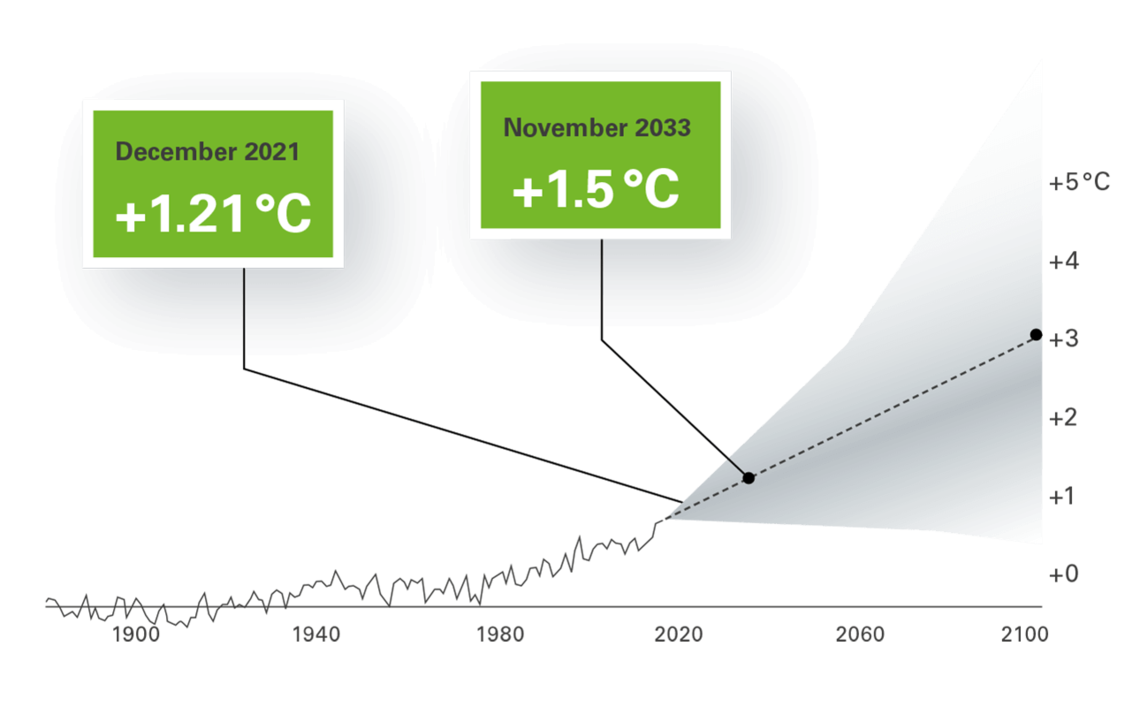
Inadequate Measures
At the 2015 UN Climate Change Conference, participants had committed to measures that would limit a global temperature increase to no more than 1.5 °C. A projection of available data from the past few years, however, shows that the 1.5 degree limit will very likely be exceeded as early as November 2033. This also has massive cosequences in terms of the threat of extreme flooding.
Cities are facing the fundamental challenge of having to redefine their relationship with water.
EFAS sent their first bulletin to the relevant national agencies on Saturday, July 10. The data continued to roll in, and the forecast only became more worrying. Independently, the German weather service forecast that more than 200 millimeters of rain would fall on some areas in less than 48 hours. The bulletins were upgraded to warnings; issued to ensure that authorities could get people to safety before the inevitable floods began. Despite this, the events of those days would go on to claim hundreds of lives.
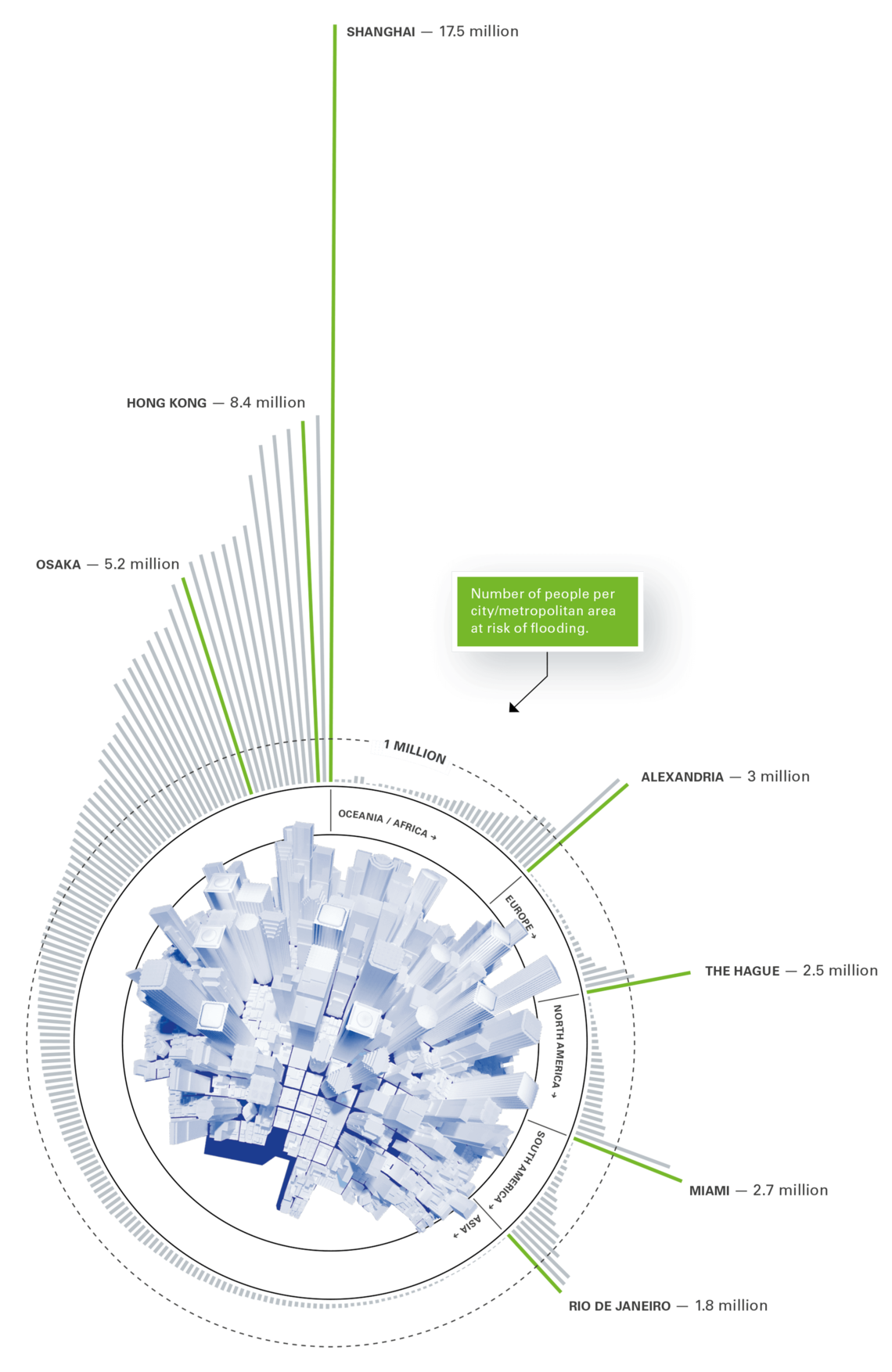
275 million people worldwide
are at risk of flooding in their cities if global temperatures rise by an average of 3 °C and sea levels rise accordingly.
Flood protection is complex
While multiple rivers burst their banks, causing buildings and bridges to collapse, for Cloke, such a tragedy represents a failure not of infrastructure, but of disaster management.
“Flood preparedness systems are long, complex chains of decision-making, and they don’t operate in the same way universally. Sometimes statutory responsibility devolves right down to the local mayor, and other times it’s a national approach. With these events, we saw many authorities act in time, to evacuate people, erect temporary flood defences, and move vehicles to higher ground. But this did not happen everywhere.”
She says that as flood forecasters, the politics of such systems can be frustrating, “especially when you know the science is good and it’s providing valuable information for those on the ground. But then you see the constraints that some people have to work under – a lack of resources or direction or ownership. You need those things to make anything happen. We simply should not have seen this number of people dying in 2021 from floods.”
According to Prof. Dr. Dr. Cecilia Tortajada, a Professor of Environmental Innovation at the University of Glasgow and Adjunct Senior Research Fellow at Singapore’s Institute of Water Policy, inefficiencies in the disaster management system reflect a larger and more worrying trend: “Urban flooding was not discussed at COP26 at all. It’s the biggest forum on climate change, and nobody talked about water. And yet, we’ve seen how urgent these issues are because they’re happening in our lifetime, not in some far off future. There’s a disconnect between top-level conversations and the realities we’re already facing, and it’s a huge problem.”
Tortajada says that many cities also face a rather fundamental challenge in managing their changing relationship with water, “Put simply, cities are most often built where they shouldn’t be. People have tried to tame rivers throughout history, changing their course or turning them into canals. Or they drained wetlands and constructed neighbourhoods on top of them. But as those areas begin to flood, they throw up their hands and blame climate change. I say, ‘No, it was your poor decision to build on the wetland.’”
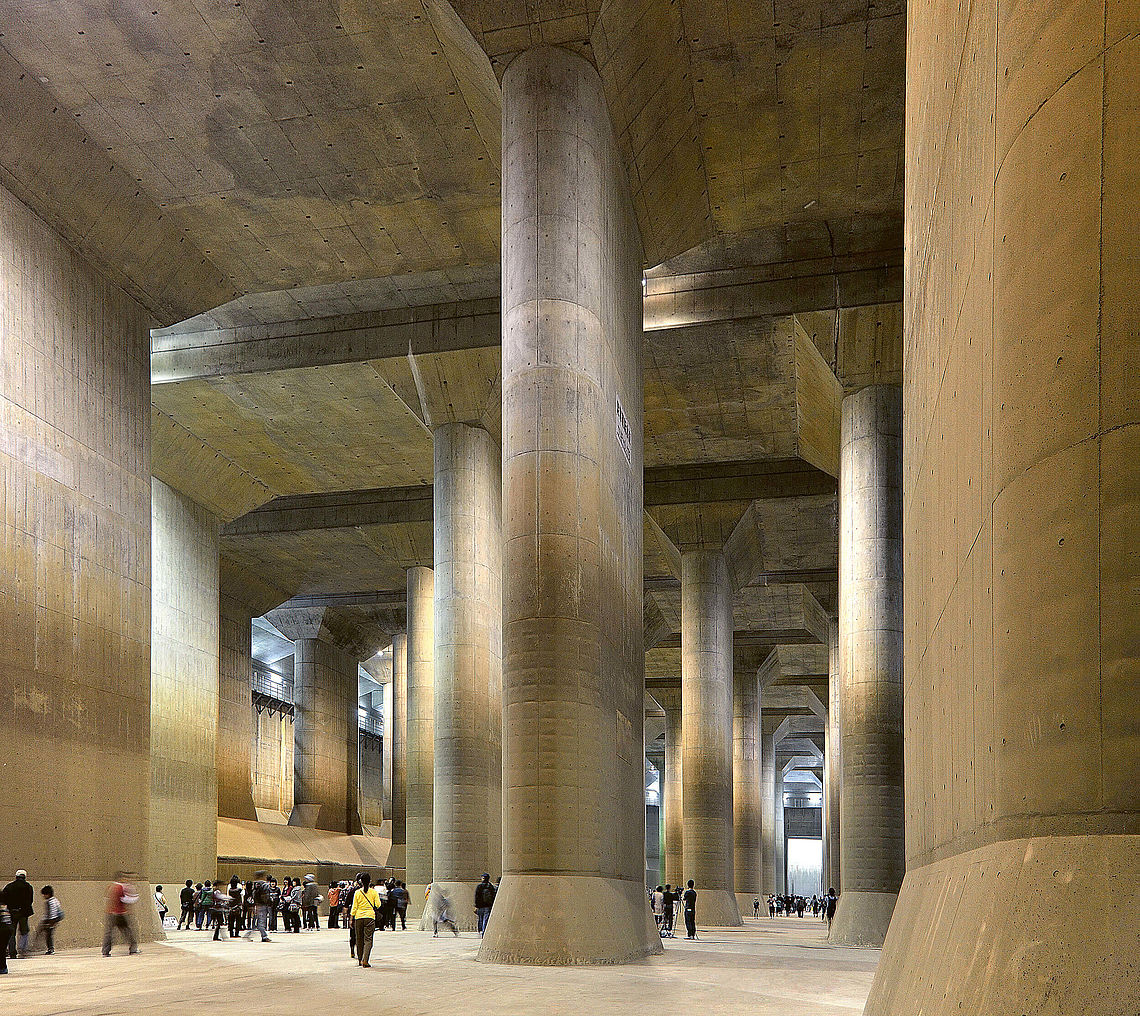
The world’s largest underground drainage and sewage system: Tokyo’s “Flood Cathedral” has been protecting the 38 million strong metropolitan area from typhoon flooding since 2008.
© wikipedia
There’s no easy solution to this. Established cities like London and New Orleans can’t be rebuilt from scratch, or picked up and moved elsewhere. Their critical infrastructure is woven into the landscape. Their people too. Rerouting and uprooting are not a practical option. But both Cloke and Tortajada agree that we could be doing much better when it comes to planning new buildings and developments, and retrofitting existing structures.
“The first thing we must do is acknowledge that the risk exists, and then design our systems based on that risk,” says Tortajada. “Resilience is less about flood control and more about flood management.” Cloke concurs, saying, “We’re going to see these heavy rainfalls again and again in our cities, so we have to think slightly differently about how they’re built. When you assume something is going to flood, that changes its design parameters.”
A challenge facing all major cities is the amount of impervious surfaces used in their construction. Chosen for their robustness, concrete and asphalt are everywhere in our urban centres; in roads and parking lots, footpaths and roofs. Rain falling on these surfaces can’t penetrate into them. With nowhere else to go, it flows along them, before entering a culvert or gutter that eventually directs the water into the municipal drains. In some cities, there are dedicated stormwater systems to manage this runoff, carrying it directly to rivers or streams without treatment. Other urban areas – especially those that grew rapidly during the Industrial Revolution – tend to rely on combined sewers. They collect both runoff and wastewater (from domestic, commercial and sometimes, industrial sources) within the same system of pipes and tunnels. This waste is then carried to a treatment plant to be processed until it meets strict environmental standards, before being discharged into a nearby body of water.
At least, that’s how they work most of the time. The problem arises when the volume of wastewater that enters a combined sewer system exceeds its capacity, as in times of heavy rain or snowmelt. When that happens, wastewater skips the treatment plant, and is instead discharged directly to nearby streams or waterways, through relief points (known as combined sewer overflows, or CSOs). Numerous cities are working to upgrade their sewers, and reduce the frequency and volume of discharges entering and polluting their precious waterways. London’s approach has been to construct a 25 km long super sewer, the Thames Tideway tunnel, using three Herrenknecht tunnel boring machines (TBMs). The project, which started in 2016, will eventually intercept, store and divert millions of cubic meters of this polluting overflow, reducing the number of discharges from an average of 60 per year, to just four. In Washington D.C., CSOs discharge more than 11 billion liters of sewage into Rock Creek and the Anacostia and Potomac Rivers annually. The city is investing in a similar solution – three tunnels, bored with Herrenknecht TBMs. A fourth tunnel is already being planned. When completed, this network is expected to prevent 98 percent of all overflow into the rivers.
When you assume something is going to flood, that changes its design parameters.
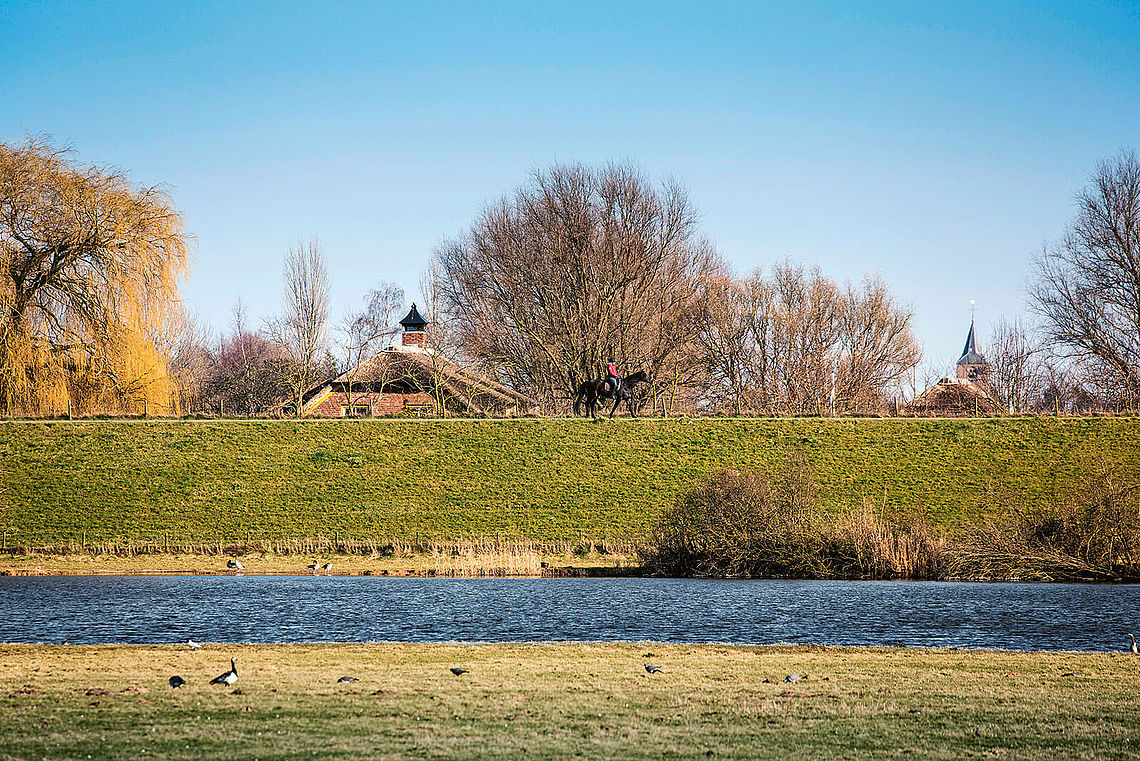
Dikes do not adequately limit flooding and its consequences. Additional innovative and sustainable approaches are needed.
© frans lemmens / Alamy Stock Photo
These large-scale upgrades to aging sewer systems are both vitally important and effective, particularly when coupled with maintenance and repair programs.
But it’s not the only type of underground infrastructure that can be a chink in the armor of a city facing increased flood risk. Storm-induced flooding saw sections of New York’s subway and London’s tube temporarily inundated with huge quantities of water in 2021. Built without flood defences, these venerable transport networks are particularly susceptible to the impacts of climate change. And even modern subway systems can struggle with water. Zhengzhou’s metro is less than a decade old, but during the July flash floods in 2021 – which saw a year’s rain fall on the city in less than 24 hours – a kilometer long section of tunnel filled with water, trapping more than 500 passengers inside a train. 14 of those people lost their lives.
With entrances that often sit below the level of the street, and access points and ventilation shafts that connect to the outside world, it’s virtually impossible to make underground transport networks impervious to floodwater.
That’s all the more reason to design our cities in a waythat gives water somewhere else to go. Professor Cecilia Tortajada admits she was amazed by the sight that greeted her as she walked down the long staircase. “The scale of it was staggering. It made me realise just how prepared Tokyo is for flooding.” She was in a huge, pressure-controlled tank that sits eneath Tokyo; part of what is widely considered to be the most ambitious floodwater diversion facility ever built. During typhoon season, loodwater is directed to one of five silos, each one 70 meter tall and 30 meter wide, and connected to the tank via 6.5 kilometers of tunnels. The tank in which Tortajada stood has a key role – to retain the water and manage its pressure. When the weather emergency passes, huge pumps discharge the floodwater into the Edo River, at the astonishing rate of 200 tonnes per second. Facilities at the scale of Tokyo’s ‘flood cathedral’ are not commonplace. Few cities have the underground space – or the financial means – to accommodate them. And for Professor Hannah Cloke, such mega-tanks are not always the right option.
A so-called blue-green infrastructure plays a decisive role in the success of "sponge cities".
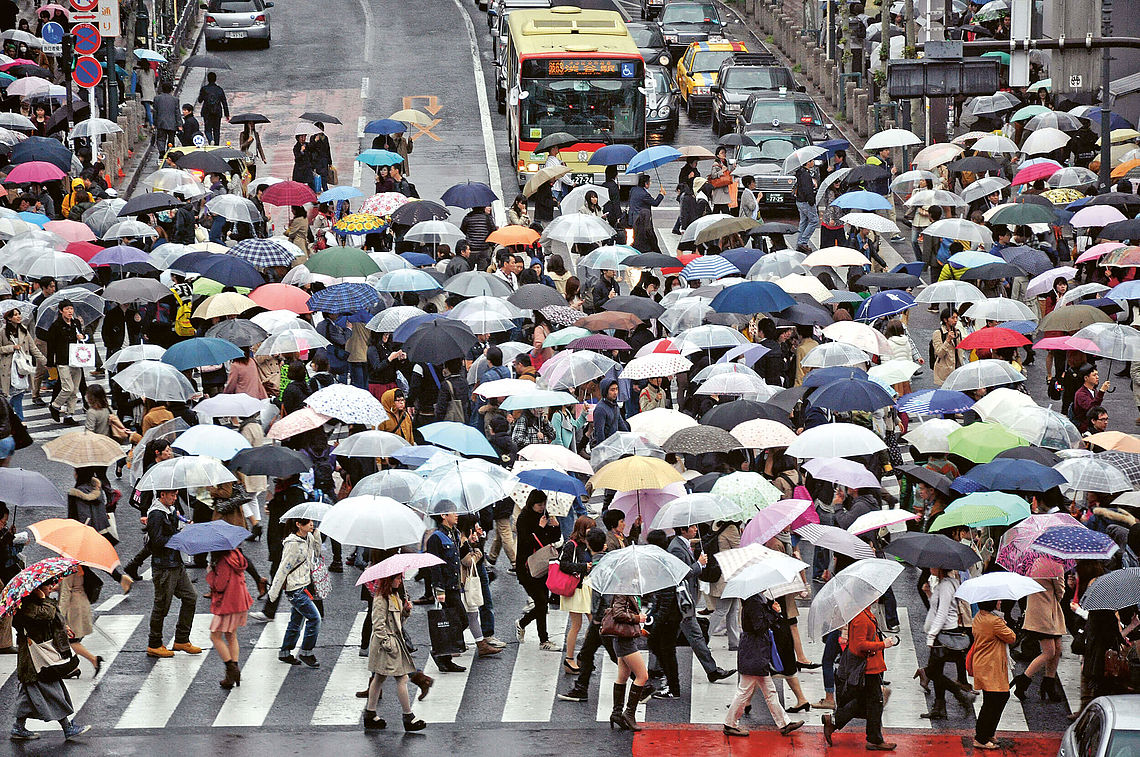
As climate change progresses, heavy rainfall events are becoming more frequent. They challenge planners, architects and engineers to fundamentally adapt their ways of thinking and parameters.
© Alex Block on Unsplash
A variety of solutions
“They’re very large engineering structures, so they come with a higher risk of failure than I’d like. And in many regions, there might be a better way to spend that money. Of course, it’s hard to generalise because every city faces its own unique challenges, but an underground tank certainly shouldn’t be the only thing you're relying on.”
Smaller, surface-level basins are widely used to temporarily store floodwater. Depending on their design, they can discharge floodwater into an existing waterway, or direct it through permeable soils into underground aquifers; recharging a city’s groundwater supply. Some regions also use relief tunnels, like that in Thun, Switzerland. In times of high rainfall or snowmelt, lake water can be drained into
the tunnel, reducing its maximum water level, and minimizing the risk of flooding. Kuala Lumpur’s stormwater tunnel has multiple levels – when a monsoon hits, the two road levels can be closed off to the public and repurposed as a flood overflow.
There’s no doubt that gray infrastructure like this plays a key role in urban flood management. But, as climate change has highlighted in recent years, it cannot do it alone. Cloke explains, “If you want to make a place more resilient to flooding, you need to implement a whole range of different solutions at different scales and some of them should be nature-based.”
Cloke’s words are a good description of a relatively new urban water management approach that’s rapidly growing in popularity – the sponge city. As its name suggests, this is a built-up area that has been specifically designed to absorb water. The concept of a sponge city first gained international attention in 2013, when the Chinese government announced that 30 cities would take part in a pilot programme to reshape their relationship with water.
Central to their success has been the widespread adoption of so-called blue-green infrastructure. Instead of building over wetlands and ponds, rivers and floodplains, such ‘blue’ elements are deliberately incorporated into the urban landscape. Likewise, through the use of green areas like parks, fields, forests, grass verges, planted beds, soil and rooftop gardens, city surfaces become more permeable. Water can trickle through these materials, and in some cases, is harvested and used by them. This not only takes the pressure off sewer systems in times of extreme rainfall, it also prevents waterlogging when the rain is less severe. Where hard surfaces are required, porous concrete, bricks and asphalt are preferred.
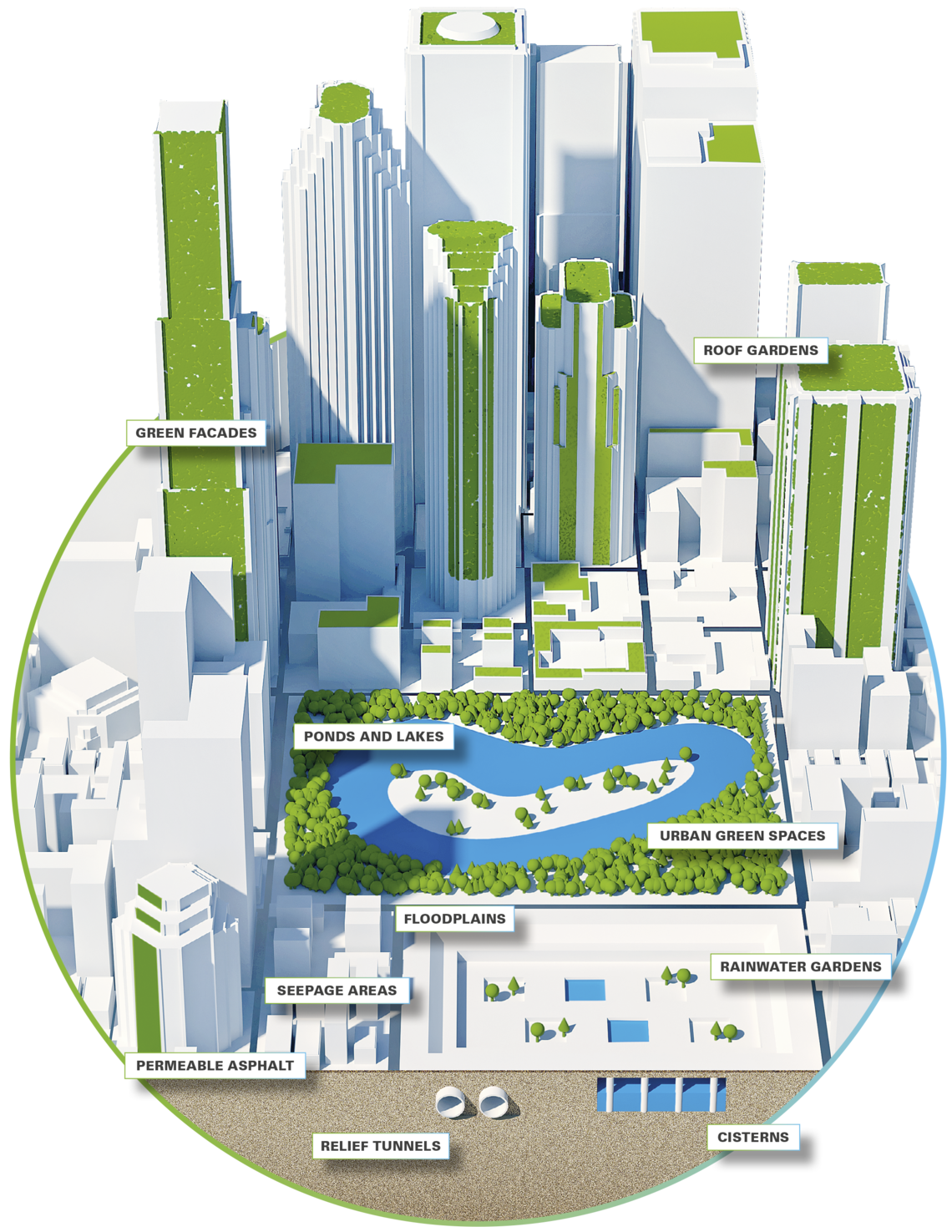
Sponge cities:
through urban planning and architectural measures, so-called “sponge cities” are designed to absorb water like a sponge and thus mitigate or completely avoid flooding. (Here an exemplary representation of different elements of a sponge city).
Sponge cities aim to embrace the natural water cycle, rather than trying to control it. Such interventions also tend to have co-benefits for ‘non-water’ issues too; reducing the urban heat island effect and improving air quality. And as seen in Rotterdam’s Benthemplein water square, infrastructure designed to manage floodwater can also double as recreation hubs – a skate park, sports court and performance space all sit within the structure. Green areas in particular have been shown to have a positive impact on both the physical and psychological health of communities served by them.
In the past year, doubts arose about the effectiveness of this infrastructure. In 2018, Zhengzhou announced that it had a goal to ‘spongify’ almost 80 percent of its core urban area by 2030, and they’d been making steady progress towards that goal.
Despite this, when the July storm hit the city, it caused flooding at a scale never seen before, temporarily displacing more than a million people. This led to widespread criticism of the sponge cities program, and in the months that followed, blame was laid at the feet of local government officials.
Experts, like Kong Feng of the China Agricultural University in Beijing, have said that water levels in Zhengzhou fell more swiftly after the floods than theywould otherwise have done, thanks to the investments made in flood management. Evidence from other pilot cities points to similar conclusions.
And as Cloke explains, even the perfect sponge city would have struggled with such a once-in-a-thousand year event like in 2021: “Micro-interventions like this can be worth doing from an economic standpoint – they mitigate the effect of small and medium flood events, which tend to be more common. But people need to realize that they’re not infallible. The biggest floods will overwhelm them.”
It is a sentiment echoed by Tortajada, “Do sponge city ideas work? Yes, but they can’t do everything, and they also can’t undo what was done before. If we’re to stand any chance of success in the future, we need to take a systems level approach. Physical infrastructure, yes, but also digital infrastructure – data from sensors and forecasts shared across borders. And most of all, we need to center water in all decision-making processes. We don’t have time to lose.”
© Cover photo, New York from above: Benjamin Gremler on Unsplash
The author,
LAURIE WINKLESS
Laurie Winkless is an Irish physicist and author. After her degree and postgrad, she joined the UK’s National Physical Laboratory as a research scientist, specialising in functional materials. Now based in New Zealand, Laurie has been communicating science to the public for 15 years. She has worked with scientific institutes, engineering companies, universities, and astronauts, amongst others. Her writing has featured in outlets including Forbes and Wired, and she has written two books, Science and the City (Oct 2016) and Sticky (Nov 2021), both published worldwide by Bloomsbury.
